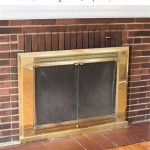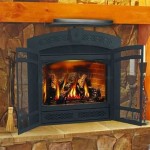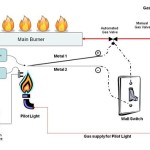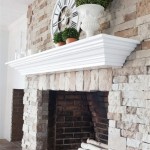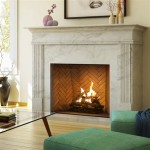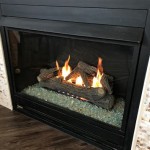Brick Fireplace Styles: A Comprehensive Overview
Brick fireplaces, a staple in residential architecture for centuries, offer a blend of aesthetic appeal, durability, and functional warmth. The inherent versatility of brick allows for a wide range of stylistic interpretations, making it a suitable choice for diverse architectural designs. This article provides a comprehensive exploration of various brick fireplace styles, examining their defining characteristics and the design principles that govern their construction.
Understanding Brick Types and Their Impact on Style
The selection of brick plays a crucial role in determining the overall aesthetic of a brick fireplace. Different brick types offer variations in color, texture, and size, each contributing to a unique stylistic effect. Common brick types used in fireplace construction include:
Common Brick: Also known as building brick, this is the most basic and readily available type. It is typically reddish-brown in color and has a relatively rough texture. Common brick is a cost-effective option and is often used in traditional fireplace designs.
Face Brick: Face brick is manufactured to a higher standard than common brick, offering greater consistency in color, size, and texture. It is designed to be visible and is available in a wide range of colors and finishes. Face brick is commonly used in contemporary and high-end fireplace designs.
Firebrick: Firebrick is specifically designed to withstand high temperatures and is used in the firebox of the fireplace. It is typically a pale yellow or buff color and has a dense, durable composition. While primarily functional, the color of firebrick can influence the overall aesthetic of the firebox interior.
Reclaimed Brick: Reclaimed brick, salvaged from old buildings, offers a unique and characterful aesthetic. It often features variations in color and texture due to age and weathering, adding a sense of history and authenticity to the fireplace. Reclaimed brick is a popular choice for rustic and vintage-inspired designs.
The bonding pattern, or the way bricks are arranged in a wall, also significantly impacts the fireplace's appearance. Common bonding patterns include running bond, stack bond, and Flemish bond, each offering a distinct visual texture.
Exploring Traditional Brick Fireplace Styles
Traditional brick fireplace styles often draw inspiration from historical architectural periods and emphasize craftsmanship and classic design elements. These styles are characterized by their timeless appeal and ability to complement a variety of interior decors.
Colonial Fireplaces: Colonial fireplaces are typically large and imposing, reflecting the grand scale of colonial-era homes. They often feature a prominent mantel, often made of wood or stone, and may include decorative elements such as pilasters, cornices, and dentil moldings. The brickwork is typically simple and unadorned, with a focus on functionality and durability. Common brick is frequently used in colonial fireplace construction, lending a rustic and authentic feel.
Federal Style Fireplaces: Federal style fireplaces, popular in the late 18th and early 19th centuries, are characterized by their elegance and refinement. They often feature a more delicate scale than colonial fireplaces and may incorporate neoclassical design elements such as fluted columns, swags, and garlands. The brickwork is typically more refined, with face brick often used to achieve a smooth and consistent finish. The mantel is a focal point, often made of marble or fine wood and adorned with intricate carvings.
Victorian Fireplaces: Victorian fireplaces, prevalent during the Victorian era, are known for their ornate and decorative detailing. They often feature elaborate mantels, intricate brickwork, and decorative tiles. The use of color is also common, with dark reds, browns, and greens frequently incorporated into the design. Victorian fireplaces often serve as a focal point in the room, reflecting the opulence and grandeur of the era. Reclaimed brick may be used to add a sense of history and authenticity to the design.
Craftsman Fireplaces: Craftsman fireplaces, popular in the early 20th century, emphasize simplicity, functionality, and natural materials. They often feature a low-profile design and a focus on handcrafted details. The brickwork is typically simple and unadorned, with a focus on showcasing the natural beauty of the brick. The mantel is often made of wood, stained to highlight the grain. Craftsman fireplaces reflect the Arts and Crafts movement's emphasis on craftsmanship and honesty in design.
Analyzing Contemporary Brick Fireplace Styles
Contemporary brick fireplace styles embrace modern design principles, emphasizing clean lines, minimalist aesthetics, and innovative use of materials. These styles often incorporate bold geometric shapes, unexpected textures, and a focus on creating a sense of visual interest. While brick retains its inherent warmth and texture, it is often employed in unconventional ways to achieve a modern look.
Minimalist Fireplaces: Minimalist fireplaces are characterized by their simplicity and lack of ornamentation. They often feature a clean, unadorned brick surround with a focus on the natural texture and color of the brick. The mantel is often eliminated or reduced to a simple shelf. The overall effect is one of understated elegance and sophistication. Face brick is often used in minimalist fireplaces to achieve a smooth and consistent finish.
Modern Farmhouse Fireplaces: Modern farmhouse fireplaces blend rustic charm with contemporary design elements. They often feature a brick surround paired with a shiplap wall or a rustic wood mantel. The brickwork may be whitewashed or painted to achieve a lighter, more modern look. The overall effect is one of cozy comfort and understated sophistication. Reclaimed brick may be incorporated to add a sense of history to the design.
Mid-Century Modern Fireplaces: Mid-century modern fireplaces are characterized by their clean lines, geometric shapes, and use of natural materials. They often feature a low-profile brick surround with a focus on horizontal lines. The mantel is often made of wood or metal and may incorporate geometric patterns. The overall effect is one of retro cool and understated elegance. A variety of brick types may be used, depending on the specific design aesthetic.
Industrial Fireplaces: Industrial fireplaces draw inspiration from industrial architecture, emphasizing raw materials, exposed brick, and utilitarian design. They often feature a large, imposing brick surround with a focus on showcasing the texture and imperfections of the brick. The mantel may be made of metal or concrete. The overall effect is one of ruggedness and urban chic. Reclaimed brick is a popular choice for industrial fireplaces, adding a sense of history and authenticity to the design.
Functional Considerations in Brick Fireplace Design
Beyond aesthetics, functional considerations are paramount in brick fireplace design. The fireplace must be properly constructed to ensure efficient combustion, safe venting, and optimal heat output. Several functional aspects must be considered.
Firebox Dimensions: The dimensions of the firebox are crucial for efficient combustion. The firebox should be sized appropriately for the size of the room and the desired heat output. An undersized firebox may not produce enough heat, while an oversized firebox may be difficult to control and inefficient.
Chimney Design: The chimney is responsible for venting smoke and gases from the fireplace. The chimney must be properly sized and constructed to ensure adequate draft and prevent backdrafting. The chimney should also be lined with fireclay tiles or a metal liner to protect the brickwork from heat damage and corrosion.
Damper Mechanism: The damper controls the airflow through the chimney and prevents drafts when the fireplace is not in use. A properly functioning damper is essential for energy efficiency and safety. The damper should be inspected regularly to ensure that it is operating correctly.
Hearth Extension: The hearth extension is the non-combustible area in front of the fireplace that protects the floor from sparks and embers. The hearth extension must be sized appropriately to provide adequate protection. The minimum required hearth extension varies depending on the size and type of fireplace.
Air Supply: Adequate air supply is essential for efficient combustion. The fireplace should have a source of fresh air, either through a dedicated air intake or through gaps around doors and windows. Insufficient air supply can lead to poor combustion, smoke problems, and increased carbon monoxide levels.
In conclusion, brick fireplaces offer a diverse range of stylistic options, from traditional to contemporary. The careful selection of brick type, bonding pattern, and design elements, combined with a thorough understanding of functional considerations, ensures that a brick fireplace becomes a statement piece that provides both warmth and aesthetic value to any home. Careful planning and expert execution are essential for creating a safe, efficient, and visually appealing brick fireplace.

34 Beautiful Fireplace Ideas For Cozy Warmth All Year Long Brick Decor Red Fireplaces Design

40 Brick Fireplace Ideas Captivating Showstoppers With Timeless Charm Makeover White

35 Stylish Brick Fireplaces That Inspire Shelterness

25 Beautiful Diy Brick Fireplace Makeovers

35 Gorgeous Natural Brick Fireplace Ideas Part 2

Fall Decor For Brick Fireplaces And Mantels Watsontown

22 Brick Fireplace Ideas To Elevate Your Home Hearth Remodel

Brick Fireplace Design Installation Scarlett Fireplaces

Brick Fireplace Design Installation Scarlett Fireplaces

Building An Electric Fireplace With Brick Facade
Related Posts

